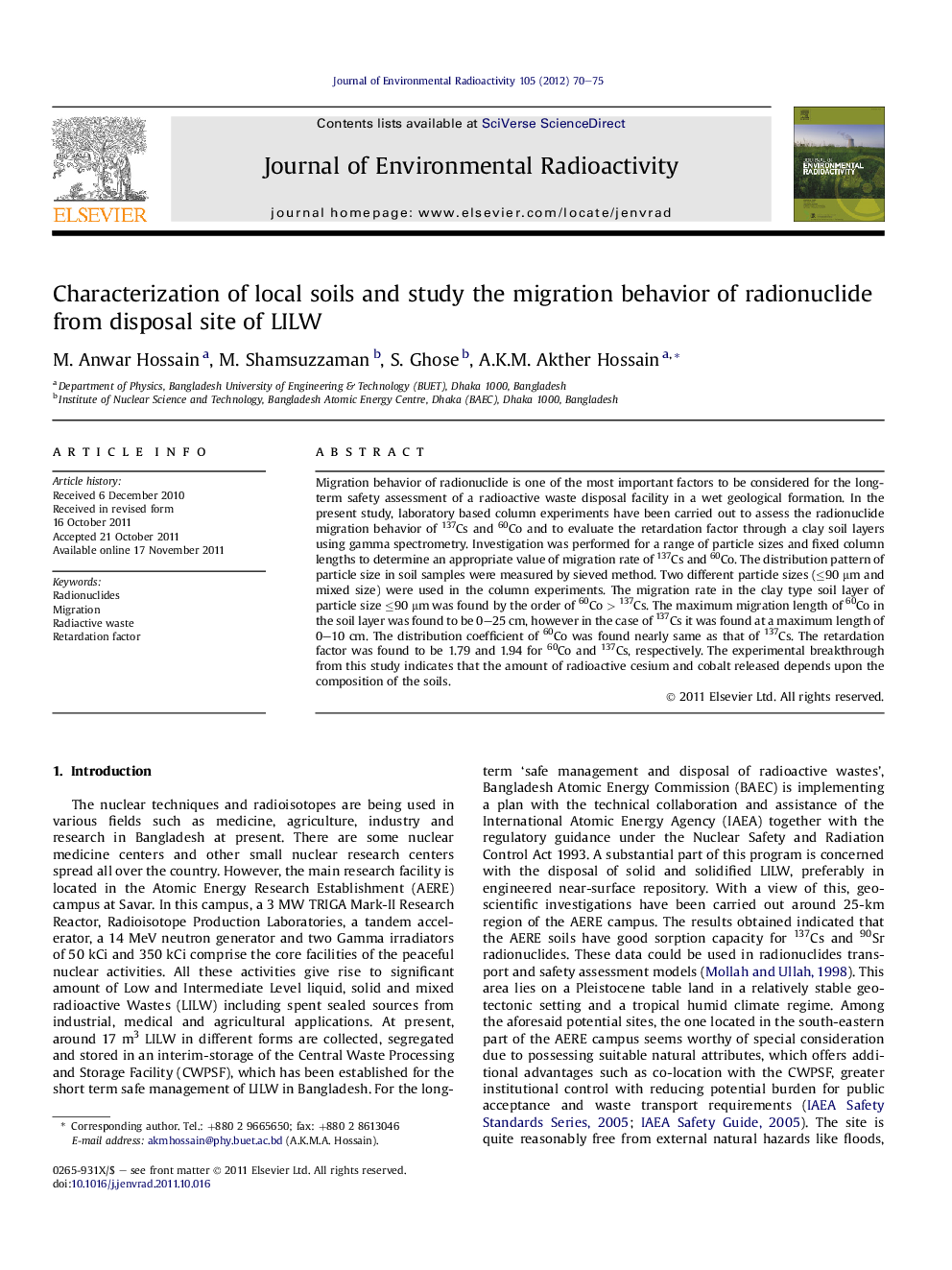| Article ID | Journal | Published Year | Pages | File Type |
|---|---|---|---|---|
| 1738478 | Journal of Environmental Radioactivity | 2012 | 6 Pages |
Migration behavior of radionuclide is one of the most important factors to be considered for the long-term safety assessment of a radioactive waste disposal facility in a wet geological formation. In the present study, laboratory based column experiments have been carried out to assess the radionuclide migration behavior of 137Cs and 60Co and to evaluate the retardation factor through a clay soil layers using gamma spectrometry. Investigation was performed for a range of particle sizes and fixed column lengths to determine an appropriate value of migration rate of 137Cs and 60Co. The distribution pattern of particle size in soil samples were measured by sieved method. Two different particle sizes (≤90 μm and mixed size) were used in the column experiments. The migration rate in the clay type soil layer of particle size ≤90 μm was found by the order of 60Co > 137Cs. The maximum migration length of 60Co in the soil layer was found to be 0–25 cm, however in the case of 137Cs it was found at a maximum length of 0–10 cm. The distribution coefficient of 60Co was found nearly same as that of 137Cs. The retardation factor was found to be 1.79 and 1.94 for 60Co and 137Cs, respectively. The experimental breakthrough from this study indicates that the amount of radioactive cesium and cobalt released depends upon the composition of the soils.
► Atomic energy research establishment (AERE), Dhaka, Bangladesh site is chosen. ► Research goal is to safe disposal of low and intermediate level radioactive wastes. ► A low cost dumping methodology was developed for radioactive waste management. ► This methodology is environment friendly. ► Results obtained in this experiment are helpful for dumping radioactive wastes.
